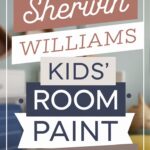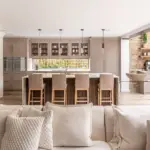Introduction
When it comes to painting your home, the debate between DIY and hiring a professional often boils down to cost. On the surface, it might seem like handling the job yourself would save money, but is that really the case? The true answer is multifaceted, encompassing not just the financial outlay but also the accompanying time, effort, and long-term consequences. This comprehensive guide seeks to dissect the various cost factors involved to help you make an informed decision.
Overview of the Cost Dilemma
Most homeowners dread the financial implications of home improvement tasks. Painting, whether interior or exterior, is no exception. The juxtaposition of immediate cost savings versus potential unforeseen expenditures makes this a complicated decision. Grasping the full scope of both DIY and professional painting options is essential before diving headfirst into either.
Importance of Understanding Both DIY and Professional Options
Often, homeowners rush into the seemingly economical choice of painting their home themselves without considering hidden costs and potential pitfalls. Conversely, many might hastily hire professionals without evaluating what they are truly paying for. By meticulously examining both approaches, you can tailor your decision to best fit your financial and personal circumstances.
DIY Painting: A Cost Breakdown
Initial Costs
DIY painting appears inexpensive at first glance, but the costs quickly add up when taking a closer look at necessary tools and materials.
Tools and Equipment
Brushes, Rollers, Trays, and Ladders
The novice painter may underestimate the sheer number of tools needed. Quality brushes and rollers can range from budget to high-end, with prices palpitating quickly. Ladders, especially for two-story homes, command their own sizable investment.

Pro Grade Paint Roller Kit, Brush & Roller for Professionals & Homeowners
Perfect for smooth finishes on your interior walls. Ideal for home improvement enthusiasts!
Buy Now on AmazonPaint, Primer, and Other Materials
Beyond brushes and rollers, you’ll need primers to prep surfaces and high-quality paint to yield satisfactory results. Drop cloths, painter’s tape, and sandpaper add to the costs.
Paint Selection
Cost Differences in Quality
Paint is not a uniform product. The disparity in cost between budget paints and premium brands is staggering. High-quality paints offer better coverage and longevity, warranting careful consideration.
How Much Paint is Needed?
Estimating the amount of paint required is an art in itself. Miscalculations could lead to unnecessary expenditure or multiple store trips, further extending your budget.
Preparation Costs
Sandpaper, Tape, Drop Cloths
Preparation materials form a significant chunk of your expenses. Drop cloths protect your flooring and furniture, while painter’s tape ensures clean lines.

Rust-Oleum 367605 Home Interior Floor Coating Kit, Semi-Gloss Black
Ideal for updating outdated flooring at a fraction of the cost of replacement and adheres without stripping, sanding or priming.
Buy Now on AmazonWall Repairs and Cleaning Supplies
Before painting, you may need to fill holes, smooth surfaces, or even carry out minor repairs. Cleaning the walls to remove dust and grime is another often-overlooked cost.
Labor Costs for DIY
Time Investment
Estimating Hours Spent on Prep, Painting, and Clean-Up
Many novices drastically underestimate the time commitment needed for a thorough painting job. From preparation and priming to painting and final clean-up, the hours can significantly add up.
Opportunity Costs
Value of Your Time vs. Other Activities
Your time is extraordinarily valuable. Consider what you could be doing instead—be it working, spending time with family, or simply relaxing. The non-monetary opportunity costs should not be trivialized.
Hidden Costs of DIY
Mistakes and Rework
The Expense of Fixing Errors
Inexperience often leads to errors—smudges, uneven layers, or incorrect colors. Correcting these mistakes requires additional supplies and time, inflating your initial budget.
Paint Waste Due to Improper Techniques
Improper painting techniques can lead to substantial waste. Excessive paint usage escalates costs and reduces efficiency.
Potential Health Risks
Improper Handling of Paint Fumes
Inhaling paint fumes poses serious health risks, from mild headaches to severe respiratory issues. Proper ventilation and masks are non-negotiable.
Safety Equipment Costs (Masks, Gloves)
A safe DIY approach necessitates safety gear—gloves, masks, and possible eye protection, all of which add to your budget.
Hiring a Professional: What’s Included in the Price?
Professional Fees Breakdown
Labor and Expertise
Professional painters charge based on their expertise and the complexity of the project. Their experience ensures efficiency and quality, which many DIY enthusiasts lack.
What’s Included in a Pro’s Estimate?
Professional estimates generally encompass labor, materials, preparation, and clean-up. This all-inclusive pricing often justifies the initial financial outlay.
Cost of Materials
Are Materials Provided by the Pro?
Many professionals include high-quality materials in their quotes, ensuring consistency in finish and durability.
Understanding Material Markup
Professionals might mark up material costs, adding to the overall price. However, their industry connections often allow them to procure supplies at lower costs than what is generally available to the public.
Benefits of Hiring a Professional
Time-Saving Convenience
Faster Project Completion
Professionals minimize the timeline thanks to honed techniques and proper equipment. What might take a DIYer weeks can often be accomplished in days by a seasoned pro.
No Need for Your Own Time Investment
Your schedule remains unperturbed, allowing you to channel your energy elsewhere while assured that the project proceeds efficiently.
Professional Results
Higher Quality Finish
A professional’s work is meticulous, offering a finish that outstrips the average DIYer’s capabilities. No streaks, overlaps, or unintended textures.
Avoiding the Hassle of Touch-Ups and Fixes
Complimentary touch-ups and minimal rework needs underscore the quality of professional services, which are rarely needed but generally included in professional contracts.
Common Extra Costs in Hiring a Pro
Unforeseen Repairs
Cost of Addressing Underlying Issues Like Mold or Damage
Professional painters often uncover hidden problems such as mold, moisture damage, or structural issues. Repairing these can augment your initial budget.
How Pros Charge for Additional Services
Established professionals follow a transparent approach, charging a fair rate for additional repairs or necessary modifications. It’s advisable to discuss these potential costs upfront.
Premium Services
Specialty Finishes and Textures
Unique finishes or textures can elevate the aesthetic appeal of a room but come at a premium. These services require specialized skills and materials, inflating costs.
Is It Worth Paying for Extra Features?
Premium features can significantly enhance the visual appeal and market value of your home. Weighing their cost against the benefits they confer is vital.
Long-Term Value: DIY vs. Professional
Durability of DIY vs. Professional Paint Jobs
Quality of Materials
DIY projects often compromise on materials to save costs. This can lead to faster wear and tear compared to the higher quality, professional-grade products used by experts.
Longevity of Professional-Grade Paint
Professionally applied, high-quality paint ensures longevity and resilience, providing better long-term value despite the higher upfront cost.
Maintenance Costs
How Often Will Touch-Ups or Repaints Be Needed?
Lower quality, DIY paint jobs necessitate frequent touch-ups and possibly complete repaints, driving up long-term costs. Professional jobs usually endure longer, delaying subsequent maintenance.
Resale Value and Curb Appeal
Impact of DIY on Home Value
A subpar paint job can detract from the perceived value of your home, deterring potential buyers or lowering offers.
Does a DIY Paint Job Affect Marketability?
Visible imperfections from DIY efforts can negatively impact your home’s marketability, leading potential buyers to seek discounts to cover future professional repainting.
Professional Painting and Home Value
A professionally painted home often garners higher interest and commands better prices, bolstering your return on investment through enhanced curb appeal and buyer confidence.
How a Pro’s Work Can Boost Home Appeal
Stellar paint jobs can emphasize architectural features and create a polished, inviting ambiance, facilitating quicker sales.
Are Buyers Willing to Pay More for Professional Work?
Buyers often appreciate and are willing to pay a premium for the assurance of professional quality, recognizing its long-term benefits.
Other Factors to Consider
Size and Complexity of the Project
When DIY Makes Sense
For smaller rooms or spaces with uncomplicated structures, DIY painting can be an economical and manageable undertaking.
When to Call a Professional
Larger areas or spaces with intricate designs, high ceilings, or difficult-to-reach places might be better entrusted to professionals equipped to handle such challenges.
Emotional and Physical Costs
Stress and Frustration of DIY
DIY projects can ferment stress, balancing your regular commitments alongside the painting task. Assess your tolerance for interruptions and potential setbacks.
Balancing Your Personal Time with the Project
Reallocating personal time to a labor-intensive project demands a reassessment of priorities. The more complex the task, the greater the encroachment on your leisure or family time.
How Much Frustration Can You Handle?
Consider your patience threshold. DIY painting can be rewarding but also temper-testing, especially when things go awry.
Physical Demands
The Toll on Your Body: Ladder Work, Bending, and Repetitive Motion
Painting isn’t just about wielding a brush. Ladder work, bending, repetitive strokes, and awkward positions can strain your body, especially if not physically acclimated.
Considerations for Those with Physical Limitations
If you have pre-existing physical conditions or limitations, DIY might not be practical, and hiring professionals becomes not just a convenience but a necessity.
Conclusion
Both DIY and professional painting carry their unique sets of costs, time requirements, and potential risks. A thorough examination reveals that while DIY might often appear cheaper at the outset, hidden expenses and potential rework can inflate the actual cost. Hiring a professional, though initially more expensive,



















